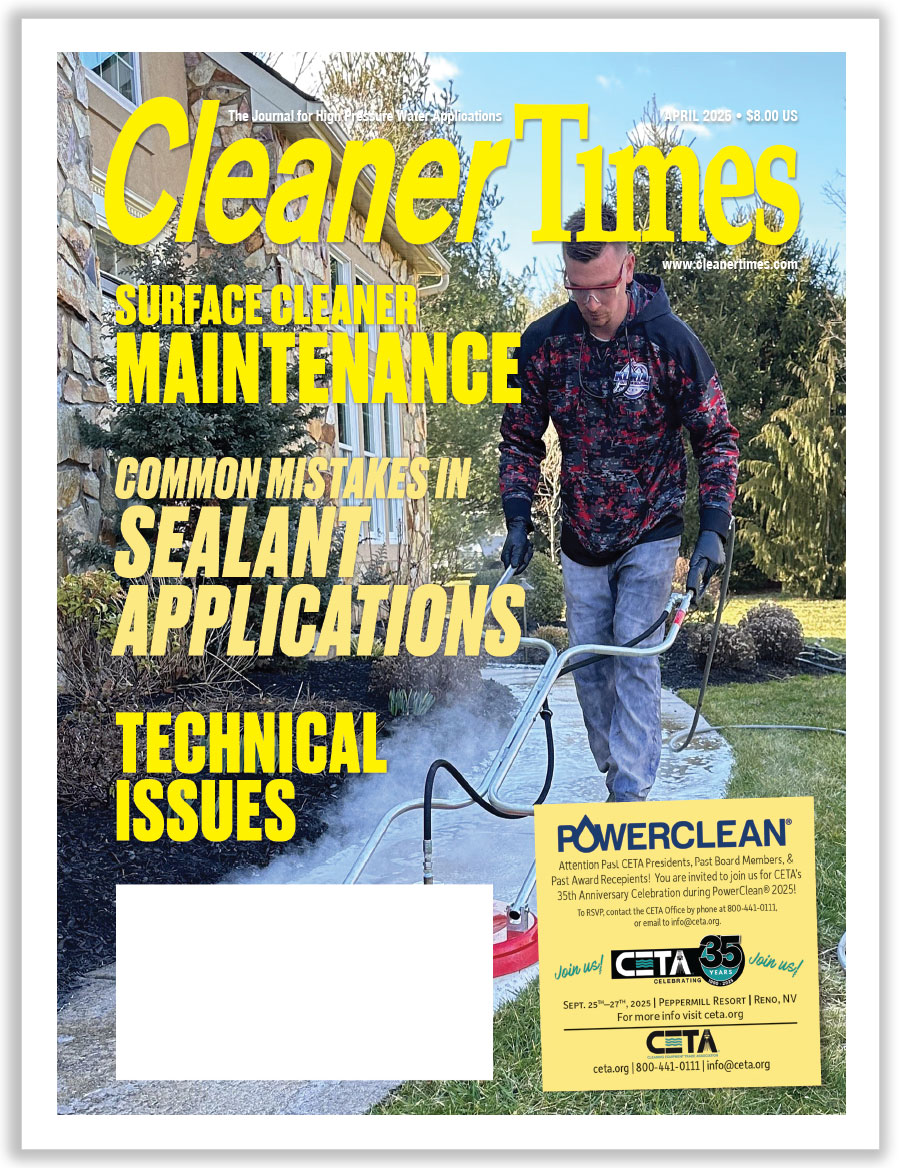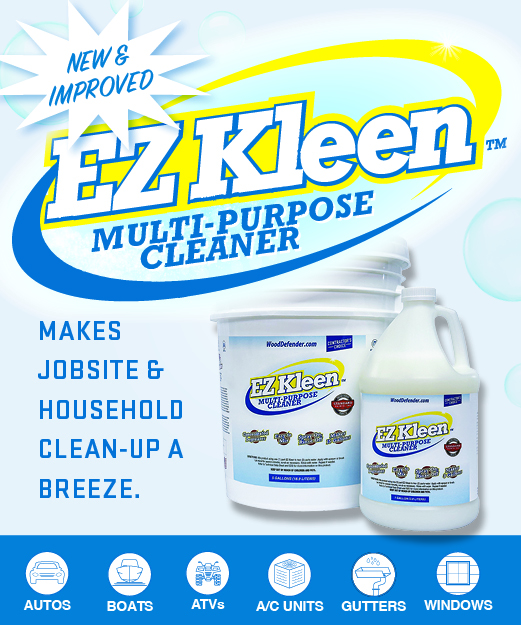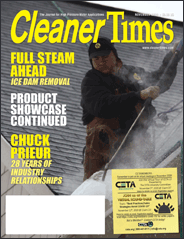
Maintenance for Surface Cleaners
by Diane Calabrese | Published April 2025
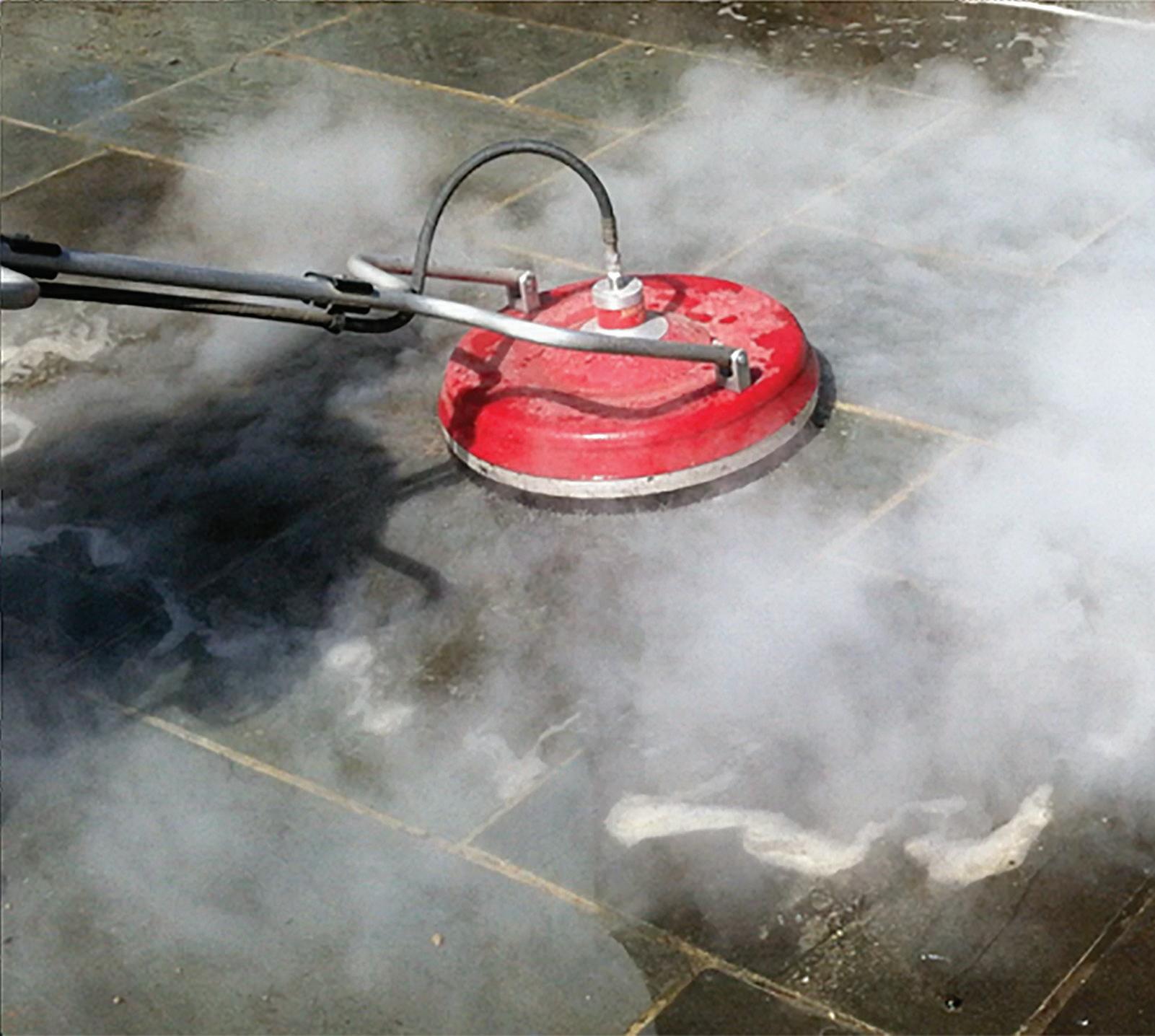
Maintenance-free would be nice. Make that ‘will be’ because although we are not there yet, the day is coming.
Surface cleaners get high marks for ease of use. But just because something is easy to use, it doesn’t mean it requires no maintenance. (Even a pencil needs sharpening.)
Three experts on surface cleaners share their tips for accomplishing the routine maintenance required–and for accomplishing it with the least disruption to a work schedule.
As with any machine, there’s some subjectivity when we try to determine what’s most important in routine maintenance. Rankings are always difficult.
“I’m sure there are many opinions on this,” says Maxwell Baldwin, the owner and director of operations at Whisper Wash in Saint Petersburg, FL. “My belief is there are two factors.”
And the factors are? “The tips of the spray bar need to be changed often,” says Baldwin. “The other equally important component is cartridge/swivel maintenance.”
Changing the tips of the spray bar is more of a performance and time-saving issue, explains Baldwin. “Tips are fairly inexpensive and need to be changed quite often in order to maintain proper fanning and surface impact to achieve desired results.”
Swivel maintenance brings different approaches with a variety of opinions, says Baldwin. “At our company we take a replacement approach to save time, and drop in a new cartridge to keep that bar spinning at optimal levels.”
Specific maintenance protocols depend upon the design of the surface cleaner. Replacement is just one possibility.
“There are other variants on the market that require rebuilding, and my advice would be to make sure those are maintained as well,” says Baldwin. Maintenance of components is necessary to “ensure proper quality and time management for your jobs.”
We can delay the decision to sharpen a pencil. A dull tip frustrates but causes no real damage. Deferring surface cleaner maintenance invites serious consequences.
A properly maintained machine is safest. “From a safety standpoint, I would suggest that if your surface cleaner has brushes, keep those brushes maintained to help keep debris from coming out of the surface cleaner,” says Baldwin.
Without the routine attention required, a surface cleaner would be at risk of failing in many ways. “It would be the swivels, hoses, and connection points,” says Baldwin. “Most times these units get a lot of UV exposure, and this can break down hoses over time. Check your hoses and connection points to make sure there are no cracks or discolorations.”
And safety again, as a breakdown could result in an incident. “If a hose pops, that could lead to injury,” says Baldwin.
Maintenance of surface cleaners is not difficult. “[It] is pretty easy on most units,” says Baldwin. “Take some extra care and time to ensure you aren’t being negligent in maintaining your units.”
Care and attention apply to use, too, explains Baldwin. Be attentive to changes in surfaces, such as curbs and uneven substrates. “Nothing can end the life of a bar or swivel faster than pushing large gpms through a unit and then suddenly stopping that rotating bar on a curb.”
Using a machine as it was built to be used is an essential part of maintenance. Sounds obvious, but we humans do get complacent and push machines just a bit harder than we should.
OEM
A pencil does not arrive with instructions for use. But most equipment comes with instructions from the OEM [original equipment manufacturer], or a QR code or web address that ties us to the OEM.
Using a machine as it was built to be used is an essential part of maintenance. Sure, pushing the limits of equipment could lead to innovative ideas.
On a job site, however, the goal should be to get the longest and best performance from a surface cleaner. That only happens if the machine gets used within recommended parameters.
Unnecessary expense is the consequence of neglected maintenance. Consider the swivel as an example.
“The most important component to a surface cleaner in general is the swivel or rotary head,” says Aaron Auger with BE Power® Equipment, which is headquartered in Abbotsford, BC, Canada. “This is the most expensive part of the entire accessory and one that deserves attention.”
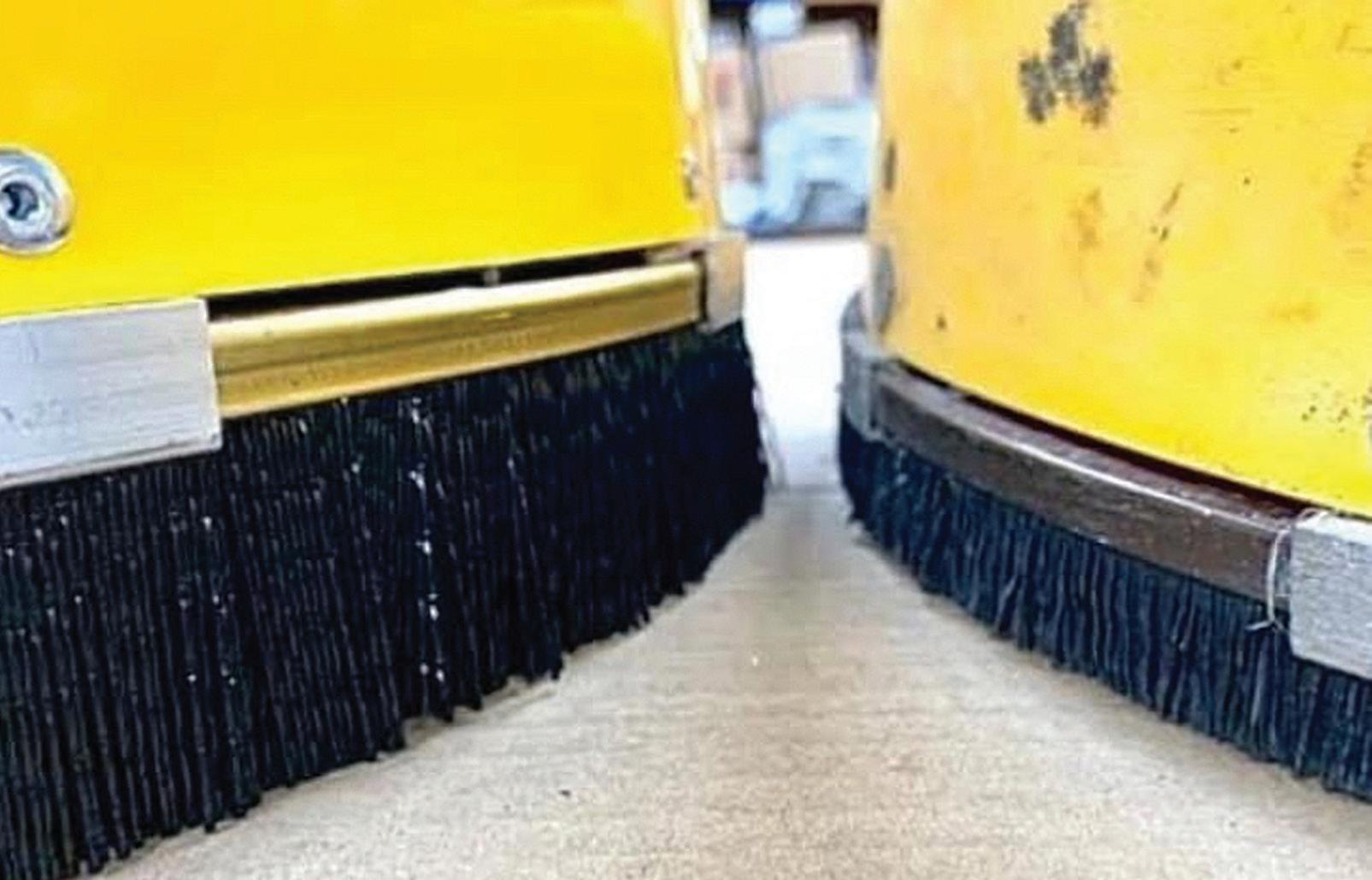
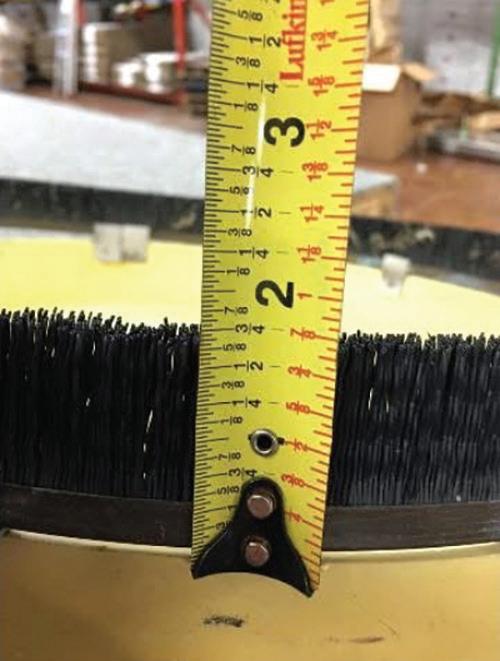
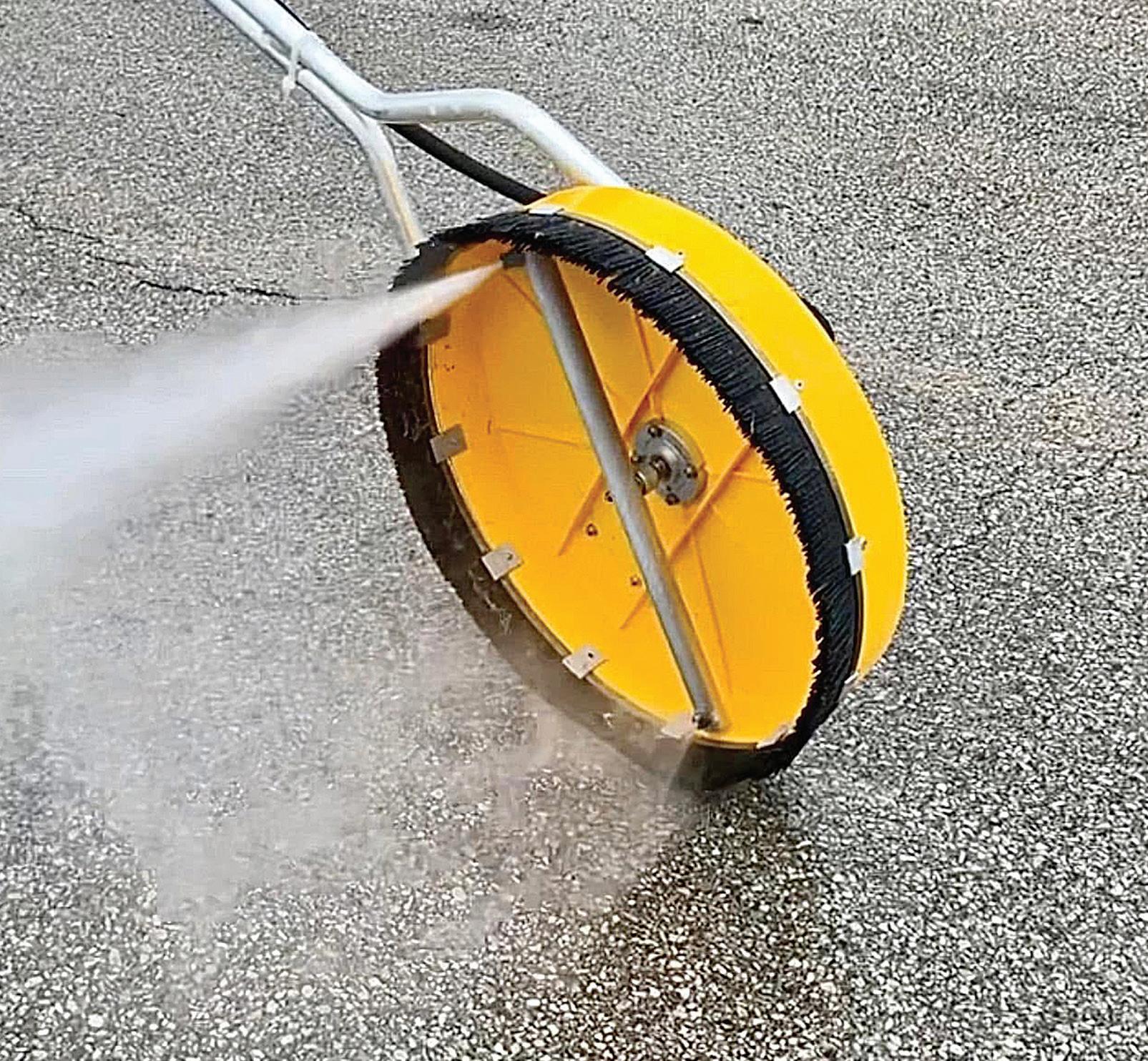
How to begin to give the swivel the attention it requires? “It’s a good idea to ensure that the swivel is always lubricated, especially if the surface cleaner is not going to be used for extended periods,” says Auger.
Then, add cleanliness to lubrication. “Keeping any dirt and debris out of the swivel will also ensure that it will perform as intended time after time,” explains Auger.
Be prudent in a proactive way. “It is [a] good idea to do a quick inspection of the nozzles after each use,” says Auger. “Make sure that no debris is stuck in the nozzles or that they are not overly worn. This will also ensure your surface cleaner performs at peak performance each time.”
We know human weakness and our innate resistance to pausing once we get going. Think of the nozzle check as akin to checking blades on a mower to make certain they are not laden with gunk. To be efficient and save time, we know what to do.
Skip the routine maintenance, including simple checks, and things become more difficult. And possibly more expensive.
“The biggest risk [in skipped maintenance] is lack of performance of the unit, which will require extra time for the operator to go over any spots that may not be cleaned up to standard due to the unit not functioning as intended,” says Auger. “If the swivel needs to be replaced, that can be a costly repair that perhaps could have been avoided with routine maintenance.”
Never a Good Time
There’s no good time for equipment to fail. Routine maintenance eats up time, but far less time than a loss of the equipment.
“The biggest risk to a surface cleaner from skipping routine maintenance is unanticipated equipment failure and the associated losses,” says Bruce Tassone, president of HydraMotion Cleaning Systems — with its signature SideWinder— headquartered in Pottstown, PA. “When a high-pressure swivel absorbs too much damage, this can lead to costly repairs or downtime or both.”
There’s no way to overstate the significance of taking a go-to machine off the equipment roster. Think putting a key player on the disabled list.
“Damage to the high-pressure swivel results in severe impact on a contractor’s effectiveness and time,” explains Tassone. “The contractor’s productivity drops, and the forced downtime of a piece of equipment consumes hours and dollars that could have otherwise been spent generating revenue.”
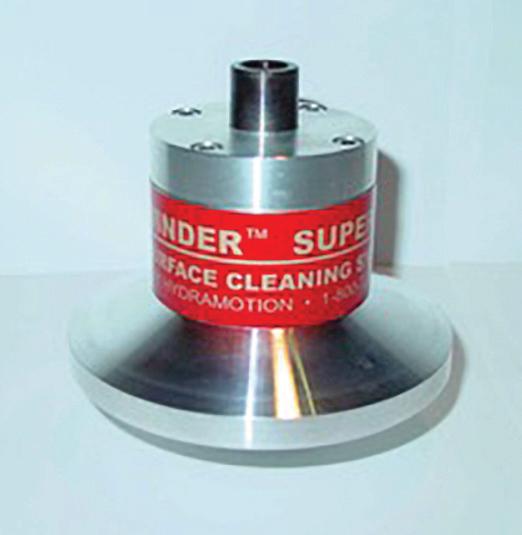
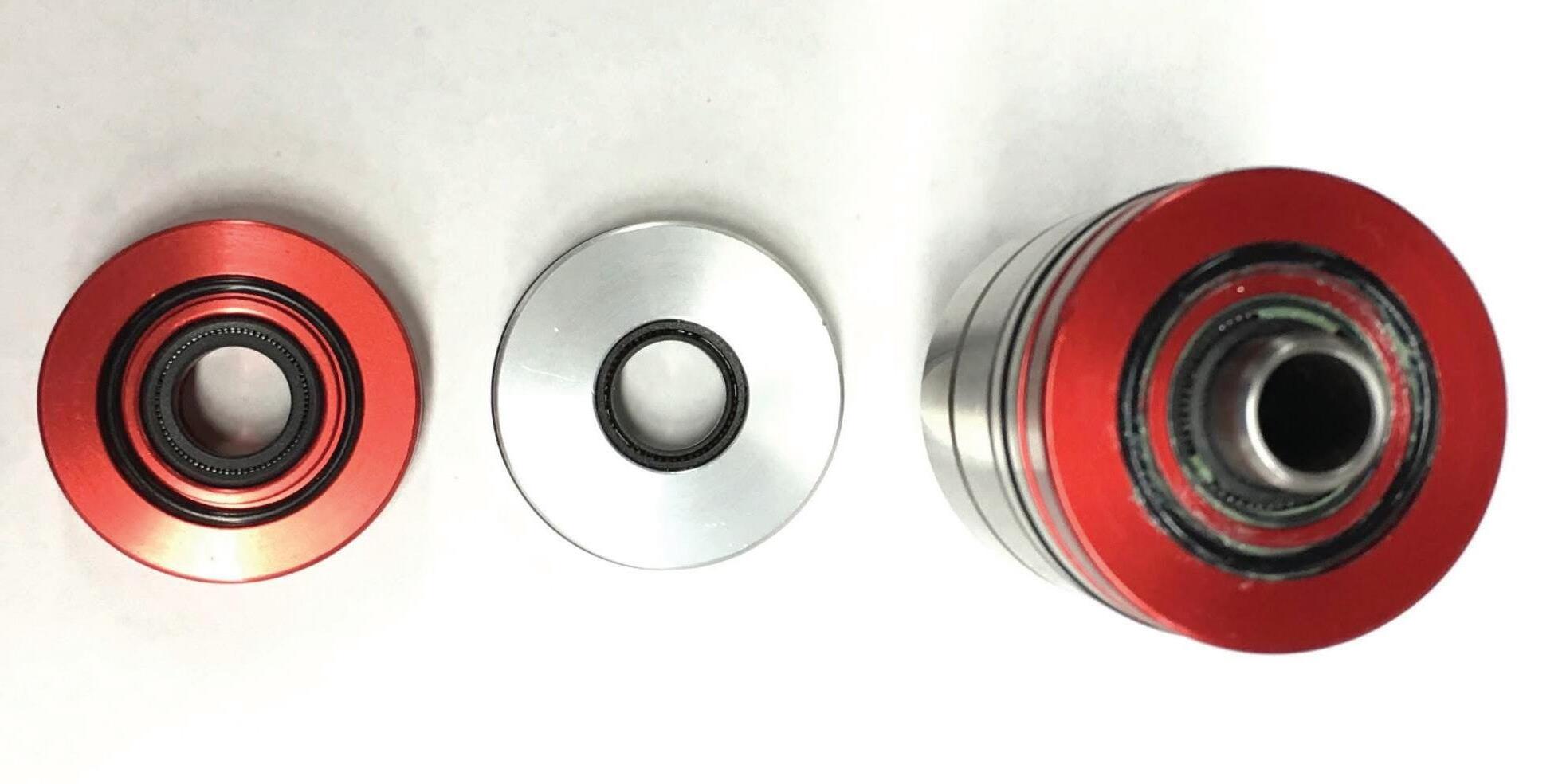
Where would Tassone begin with maintenance? “There are three critical components to maintain on a surface cleaner,” he says. “The most important of the three is the swivel assembly.”
Tassone explains that on his company’s signature machine, the checks on the swivel begin with the lower ports. “Check the lower ports at the swivel base for any bypass water flow.”
And if there is flow? “If some bypass water is seen from these ports, the operator should check the seals,” says Tassone.
“Another important component is the spray bar, specifically the spray nozzles,” says Tassone. “If the nozzles are clogged or show sign of wear, it will dramatically impact the effectiveness of the surface cleaner.”
Go back to the lawnmower analogy with muck and grass clinging to the blades. Now that slows things down significantly and results in uneven cuts. The muck also contributes to machine damage by taxing alignment.
Take one more regular precaution beyond regularly checking for clogs, advises Tassone. “We recommend filters at the pressure washer discharge and at the accessories’ inlets.”
What purpose do the filters serve? “[They] protect all the high-pressure components from premature clogging and failing due to the accumulation and ingestion of debris in the equipment.”
Small amounts of debris can add up to a big problem. “When high-pressure components become clogged, damaging vibration and loss of water flow can occur. Additionally, this small, hard debris acts like sandpaper leading to premature wear and damage.”
Debris coming through the public water supply that a contractor taps–is that possible? It most certainly is – and does.
Assuming that there’s no junk in the water, nothing to be filtered or menace machine parts, is a bad guess. In some parts of the country, it’s possible to turn on the tap in the kitchen and fill a glass with water as well as flakes of metal or other residues. It’s usually when the utility is doing known repair work, but not always.
Filters are the friend of any machine with an intake from the public water supply – from washing machines to surface cleaners. They are not expensive, but they do need regular attention.
In fact, the most routine of routine maintenance on a surface cleaner might be reduced to the two easiest components to monitor – and replace as needed: filters and seals.
The simplest actions, analogous to keeping a pencil sharp, contribute to top performance. (When we go maintenance-free, it will be easier.)


